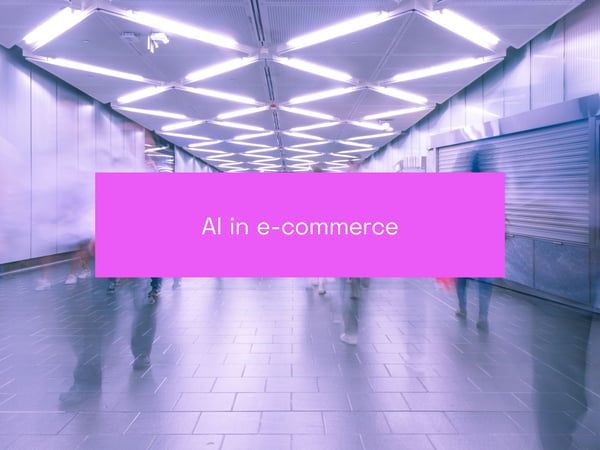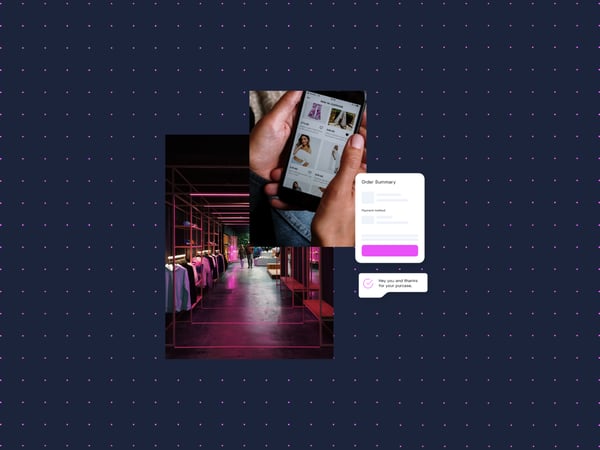As we approach the final stretch of 2024, the e-commerce landscape is changing faster than ever. New trends are influencing how we shop online, but the question is: which trends are truly relevant for your business? Here’s a snapshot of the hottest trends right now and how you can assess if they fit your operations.
1. AI and Personalization at New Levels
AI is no longer just a buzzword – it’s a reality that is fundamentally transforming e-commerce. Today, you can use AI to automate and streamline several parts of your business. For example:
- Automatic translations: Perfect for international e-commerce retailers looking to quickly reach new markets without needing manual input.
- Generating images: Tools that can create product images based on text descriptions, saving time and production costs.
- Personalized shopping experience: AI can analyze customer data and suggest products based on past purchases and behavior, boosting conversions and customer loyalty.
Example: Companies like Zalando use AI to create personalized recommendations based on customers’ style preferences, resulting in increased customer satisfaction and repeat sales.
2. Sustainability – More Than Just a Trend
Sustainability is here to stay, and it’s something customers are actively demanding. One company leading the way is Patagonia. They have built their entire business model around sustainability, with recycled materials, eco-friendly processes, and a focus on extending product lifespans through repair services. The result? They’ve not only gained loyal customers but also strengthened their brand globally by actively engaging in environmental issues.
How can your business benefit from the sustainability trend? By offering eco-friendly products, optimizing your shipping options, or being transparent about your carbon footprint, you can add value for your customers and differentiate yourself from competitors.
3. AI-Based Personalization – The Key to Success
We’ve heard it before, but 2024 is taking personalization to the next level. AI-based personalization allows companies to create individual shopping experiences that feel more relevant and engaging for each customer. This could involve:
- Personalized product recommendations based on purchase history and preferences.
- Tailored marketing messages that adapt to customer behavior in real-time.
- Predicting future purchases to deliver relevant promotions and discounts before the customer has even thought of it.
Companies like H&M have used AI to create a more personalized shopping experience, resulting in increased customer engagement and a smoother buying process. While personalization is most evident in markets like the USA, UK, and Germany, we are now seeing a strong rise in the Nordics as well.
4. Live Shopping and Social Commerce
Live shopping, where influencers and brands interact with customers in real time, has taken off. We’re especially seeing this trend grow significantly in markets like China and the USA. A successful example is Amazon Live. By using live streams, Amazon has enabled influencers and brands to showcase and sell products in real time, which has led to increased sales and deeper customer engagement.
5. Automation of Return Management
With 20-30% of online purchases being returned, it’s essential to have an efficient return process. AI can help prioritize and streamline returns, saving both time and money. Is return management a challenge for you? If so, this could be a smart area to invest in.
One company offering this kind of solution is inretrn/Inretrn. They help businesses optimize return management by automating the process and assessing which products should be resold the fastest, reducing costs and improving the customer experience. This leads to increased efficiency and a higher recovery rate of returns.
How Do You Know if a Trend Suits You?
It’s easy to get inspired by new trends, but not all are relevant to everyone. Here are three simple steps to evaluate if a trend is right for your business:
-
Know your target audience What are your customers asking for? By understanding their needs and buying behavior, you can determine which trends will have the greatest impact.
-
Assess your resources Do you have the technology and the team to implement the trend? Make sure you have the right foundation before going all-in.
-
Test on a small scale Introduce a trend to a portion of your audience and gather feedback. See what works before making a larger commitment.
E-commerce is changing rapidly, but by choosing the right trends for your business, you can not only stay competitive but also create long-term value.



